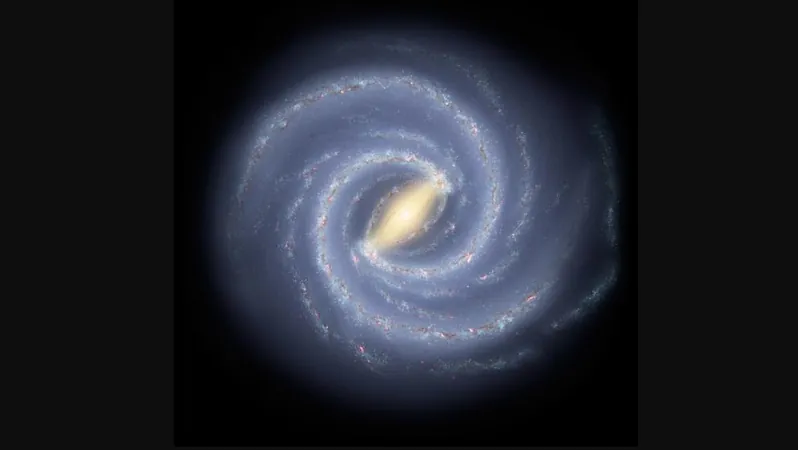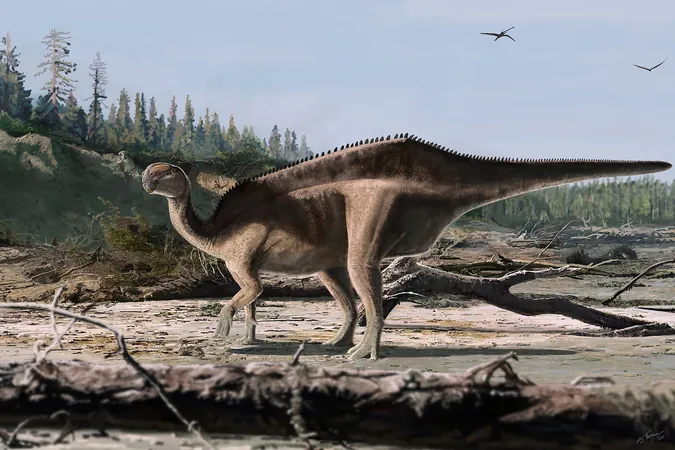
Is a Cosmic Void the Key to Solving the Hubble Tension?
2025-07-21
Author: William
A Groundbreaking Discovery in Cosmology
A vast, low-density area of space surrounding our Milky Way could finally provide answers to one of cosmology's biggest conundrums: the Hubble tension. This issue stems from conflicting estimates of the universe's expansion rate, a discrepancy that has baffled scientists for years. A new study suggests that this local cosmic void may reconcile these differences, presenting a solution that significantly enhances alignment with observations compared to the prevailing Standard Model of cosmology.
Understanding the Hubble Tension
The Hubble constant measures the rate at which the universe is expanding, derived through two principal methods. One method looks back in time, analyzing the cosmic microwave background (CMB), the radiation from shortly after the Big Bang. The other involves observing nearby entities, such as supernovae and galaxies, to gauge expansion in our cosmic neighborhood. Ideally, both approaches should yield the same figure, but they reveal a stark difference: local estimates suggest a universe expanding 8% faster than early-universe data, a discrepancy deemed too large to be mere experimental error.
The Role of the Local Void
Could our local environment be distorting these readings? Indranil Banik, a cosmologist from the University of Portsmouth, presents a theory: we might inhabit a region roughly 20% less dense than average, extending about a billion light-years from us. Evidence supporting this local void comes from numerous sources across the electromagnetic spectrum, from radio to X-rays. This underdense area subtly alters how we perceive galaxy redshifts—the stretching of light that indicates how quickly galaxies are receding from us.
Proving the Hypothesis
To investigate this void theory, Banik and his colleague Vasileios Kalaitzidis from the University of St Andrews used baryon acoustic oscillations (BAOs)—the echo of sound waves from the early universe that manifest as ripples in galaxy distribution. These ripples serve as cosmic measuring sticks, allowing researchers to track the universe's expansion. If our galaxy sits within a void, the observed size of these ripples would differ locally, a situation the researchers tested against two decades of BAO data.
The findings were startling: the void model proved to be about one hundred million times more likely than the Standard Model without a local void. The comparisons were conducted without initially factoring in BAO data, clarifying that the predictions were rigorously tested.
Looking to the Future
Though this void hypothesis looks promising, Banik emphasizes that further data is essential. "More BAO observations at shorter distances can significantly enhance our understanding, as this is where a local void's influence would be most pronounced," he asserts. Additional methods—like galaxy velocity measurements and finer galaxy counts—are also in play. Banik remains hopeful that within the next five to ten years, we may solidify this finding, particularly as we probe deeper into our nearby universe.
Continuing Investigations
In addition, Banik is analyzing supernova data to determine if the Hubble tension persists at greater distances. "We're exploring whether the tension fades in more distant realms since a local void would exert less influence there," he notes. Despite the challenges ahead, the excitement in the cosmological community is palpable—improved surveys and refined models may soon unlock the mysteries behind the Hubble tension, transforming our understanding of the cosmos.









 Brasil (PT)
Brasil (PT)
 Canada (EN)
Canada (EN)
 Chile (ES)
Chile (ES)
 Česko (CS)
Česko (CS)
 대한민국 (KO)
대한민국 (KO)
 España (ES)
España (ES)
 France (FR)
France (FR)
 Hong Kong (EN)
Hong Kong (EN)
 Italia (IT)
Italia (IT)
 日本 (JA)
日本 (JA)
 Magyarország (HU)
Magyarország (HU)
 Norge (NO)
Norge (NO)
 Polska (PL)
Polska (PL)
 Schweiz (DE)
Schweiz (DE)
 Singapore (EN)
Singapore (EN)
 Sverige (SV)
Sverige (SV)
 Suomi (FI)
Suomi (FI)
 Türkiye (TR)
Türkiye (TR)
 الإمارات العربية المتحدة (AR)
الإمارات العربية المتحدة (AR)